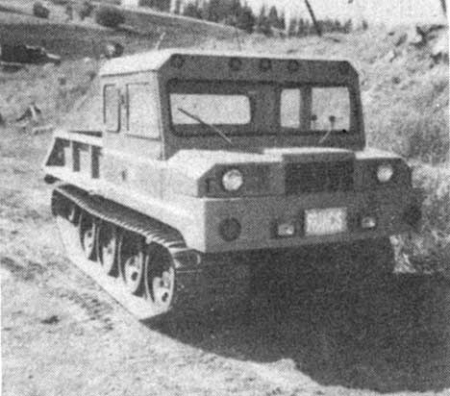
"It's great for getting hay out to cattle even in the deepest snow," says Charles R. Hays, who rebuilt an old 1945 Army steel-tracked vehicle for use on his cow/calf operation.
"Francis the Blue Mule", as Hays calls the rig, was originally built by Studebaker as an open-topped tracked vehicle for transporting fuel and other supplies across the frozen tundra of Alaska. It had 22-in. wide steel tracks on rubber mounts that ran the entire length of the vehicle, and it had a Studebaker 4-cyl. engine, automatic transmission, and 2-speed rear end. At the end of World War II it was sold to an Alaskan sporting club which added a wooden deck, side racks, and a plywood cab to enclose the bucket seats. Eventually it was used by a woodlot operator in eastern Oregon for skidding logs. However, the heavy work caused an axle to bend, and Hays found the vehicle with a "for sale" sign attached, sitting alongside a highway.
He rebuilt the tracks, replacing all the missing rubber pads and broken track pieces. Then he cut off and discarded the entire outside structure and built a 6-ft. long, 3 1/2-ft. wide box with 1 1/2-ft. high sides. He also built a new cab complete with a paneled, carpeted interior and 1 1/2-in. of foam insulation around the sides. Then he spray painted the entire rig blue with white trim.
"It weighs 6,600 lbs., but it only sinks into the snow about 4 to 6 in. so we can use it in waist-deep snow," says Hays. "The rubber pads sink down and give the track's steel cleats a chance to grip the snow. It's about the size of a Chevrolet Luv pickup aid has everything a pickup has including a horn, windshield wipers, turn signals, fog lights, brake lights, heater, and defroster.
"It goes up to 36 mph even across snow. I often drive it to work in Boise, Idaho. As far as I know it's the only track vehicle of its type in Idaho that's licensed for highway use. However, it doesn't work well on icy roads because the track tends to 'skate'.
